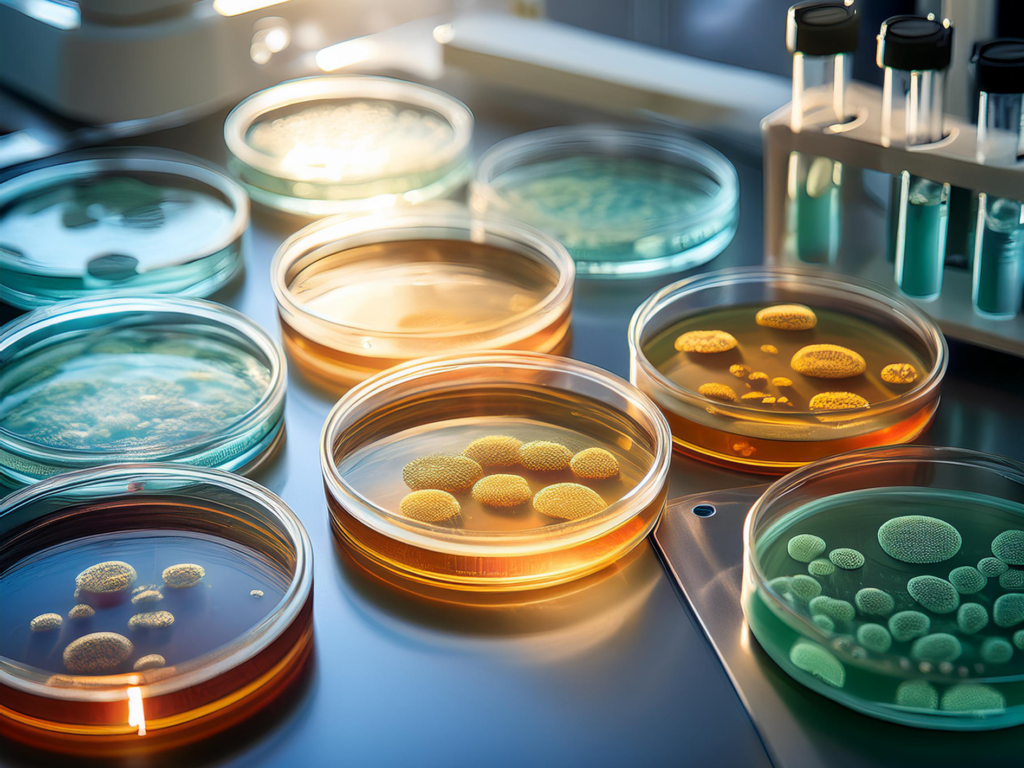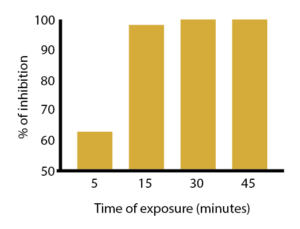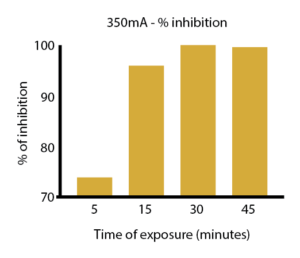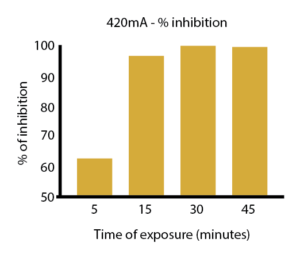Case Study
Sanitising Light Solutions -
E.coli and COVID-19
The Effect of Our Sanitising Light Solutions on E.coli and COVID-19
Maintaining a balanced microbial load in the environment is essential for supporting the immune system and ensuring the natural interaction between living beings and non-infectious microorganisms. Over-sterilisation, especially in everyday environments, has been shown to weaken the immune system. Guided by this understanding, Anglo Nordic prioritises a sanitisation approach that eliminates harmful pathogens like E.coli and COVID-19 while preserving the effectiveness of the human immune system. The following case study highlights how Our Sanitising Light Solutions have been effectively applied to combat E. coli and COVID-19, or more specifically, the virus SARS-CoV-2 that causes COVID-19. This is with the aim of demonstrating its innovative ability to ensure safety without compromising immune health.
Background
This study consisted of two practical phases:
In Phase 1, researchers at the ICGEB laboratories in Trieste tested the effectiveness of Our Light Solutions against a specific strain of E. coli and the human coronavirus SARS-CoV-2 (COVID-19).
In Phase 2, researchers installed Our Lights in a model cruise ship cabin at the University of Trieste’s Faculty of Engineering laboratories to conduct environmental testing.
See Part 2 of this study here!

Researchers conducted the SARS-CoV-2 (COVID-19) tests across two timeframes: 2nd to 5th February and 16th to 19th February 2021. Meanwhile, they carried out the E.coli tests during a single timeframe from 1st to 15th March 2021.
Phase 1 – SARS-CoV-2 (COVID-19)
Round 1
To test the effectiveness of Our Lights on the virus, the following experimental setup was used:
- Our Lights, installed as LEDs in a lamp, were set to 500 mA, 160V, and 80W.
- The room temperature was maintained at 23.4°C throughout the experiment.
- The virus samples were exposed to the light for durations of 5, 15, 30, and 45 minutes.
Researchers covered a second Petri dish containing the virus with aluminium foil to block the light for control purposes. They placed both dishes under identical environmental conditions during the experiment.
After exposure, researchers collected and diluted the virus samples before applying them to Vero E6 cell monolayers for testing. They used these cells to perform a plaque assay, which measures the amount of infectious virus present.
The samples incubated for 72 hours to allow the virus to grow on the cell monolayers. After incubation, researchers fixed and stained the cells using standard laboratory procedures.
Finally, they counted the plaques where the virus had destroyed the cells, determining how much infectious virus remained after light exposure. This process measured the light’s effectiveness in reducing the virus’s infectious potential.
Researchers summarised the results from the first round of tests (conducted between February 2nd and 5th) in the table here. The data show that the virus experienced 64.71% inhibition after 5 minutes of exposure, 98.13% after 15 minutes, and 99.98% after 30 minutes.

Round 2
Researchers conducted a second round of testing using the same setup but adjusted the lighting to two power levels. They set the power levels to 350mA and 420mA to evaluate how power supply impacts microbicidal efficacy.
The tables below display the results of these adjustments. All experimental conditions demonstrated the effectiveness of Our Light Solutions on SARS-CoV-2 (COVID-19).
The conclusions of the ICGEB report are as follows:
“… As shown in Figure 3 below (referring to the previous tables), at all tested intensities, we observed good inhibition.
This inhibition started at 15 minutes of exposure (data at 500mA are shown above).”


Phase 1 - E.coli
Researchers used DH5, a non-pathogenic E. coli strain commonly used in molecular biology and classified at the lowest biosafety level, for testing. This choice allowed them to conduct tests in the cruise ship cabin during Phase 2 using the same strain.
They applied the same setup used for the SARS-CoV-2 tests and tested three different light intensities. As shown in the tables below, Our Light Solutions demonstrated promising efficacy in reducing the microbial load of E. coli.
Researchers used the same set-up as per the SARS-CoV-2 tests, as well as using the three different intensities of the light. As we can see from the tables below, Our Light Solutions show promising efficacy in reducing the microbial load of E.coli.
Conclusion of Results
Both tests successfully confirmed strong technical and scientific evidence supporting the effectiveness of Our Lighting technology against viruses and bacteria. The technology avoids total sterilisation, maintaining balance within the ecosystem and preserving the human immune system. Prof. Marcello and his team further validated these findings through in vitro tests conducted at the ICGEB laboratories, concluding the following:
“Firstly, we analysed the effect of the LED on SARS-CoV-2 (COVID-19) observing a very good virucidal effect at all illumination conditions. These data confirm those provided by the Company and conducted independently in several laboratories. Next, we tested the ability of the configuration to inhibit E. coli. Again, we observed a very good performance of the LED… Clearly, the two systems may differ a lot with respect to the mechanism of inactivation. The effect appears virucidal for SARS-CoV-2 (COVID-19), while, in the case of bacteria, it is instead likely a combined bacteriostatic germicidal effect….” (Bacteriostatic meaning causing the inability to reproduce, while virucidal meaning the destruction of the virus).
Phase 2 of this study has been published! Read it here!
So why not talk to us about Our Sanitising Light Solutions as part of our Healthy Buildings range.
If you’d like to find out more about our approach and experience in creating healthy buildings please do get in touch, or check out our other case studies.
